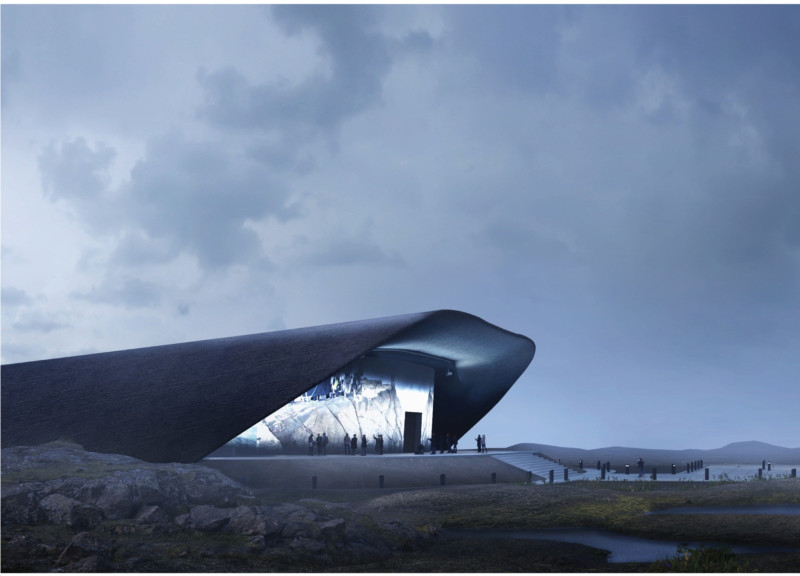5 key facts about this project
The Jarðar Pavilion is designed to honor the cultural importance of cinema in Iceland. Located next to geothermal hot springs, it serves as a space for celebrating Icelandic storytelling while promoting exchanges with international filmmakers. The design combines local narrative elements with global cinematic influences, creating a facility that respects the rich heritage of Icelandic film.
Local and Foreign Influences
The structure reflects two distinct influences: local stories and foreign narratives. The central part of the Pavilion represents Icelandic cinema, firmly rooted in the traditions and tales of the local culture. On the other hand, the outer shell has a more modern look, symbolizing international cinema that often showcases Iceland's stunning landscapes. This thoughtful combination allows visitors to experience how local and global influences interact and enrich the film industry.
Interior Circulation and Experience
Visitors move through spaces that imitate the natural flow found in caves, which enhances the experience of exploring Icelandic film history. As they enter the Pavilion, guests go down through layers that evoke the geological features of the surrounding landscape. This design not only draws attention to the Pavilion's connection to the environment but also encourages a deeper engagement with the stories presented within.
Material Selection and Sustainability
The Pavilion uses various sustainable materials to support its ecological goals. Flyash concrete is chosen for its strength and lower environmental impact, contributing to the building's sustainability. Recycled steel adds structural support while remaining light. Additionally, local stone helps to regulate the interior temperature, further connecting the building to its surroundings. This careful selection of materials highlights the commitment to sustainability and the relationship between the Pavilion and the natural world.
Program and Usability
The layout includes public spaces such as an auditorium and gathering areas, making the Pavilion accessible to the community and visitors. This arrangement emphasizes its role as a cultural center for sharing cinematic experiences. The spaces are designed to encourage interaction, inviting people to explore both local and global narratives in film.
Large windows frame views of the landscape, allowing natural light to brighten the interior while linking visitors to the outdoor environment. This detail reinforces the connection between the building, the landscape, and the stories told within.


























